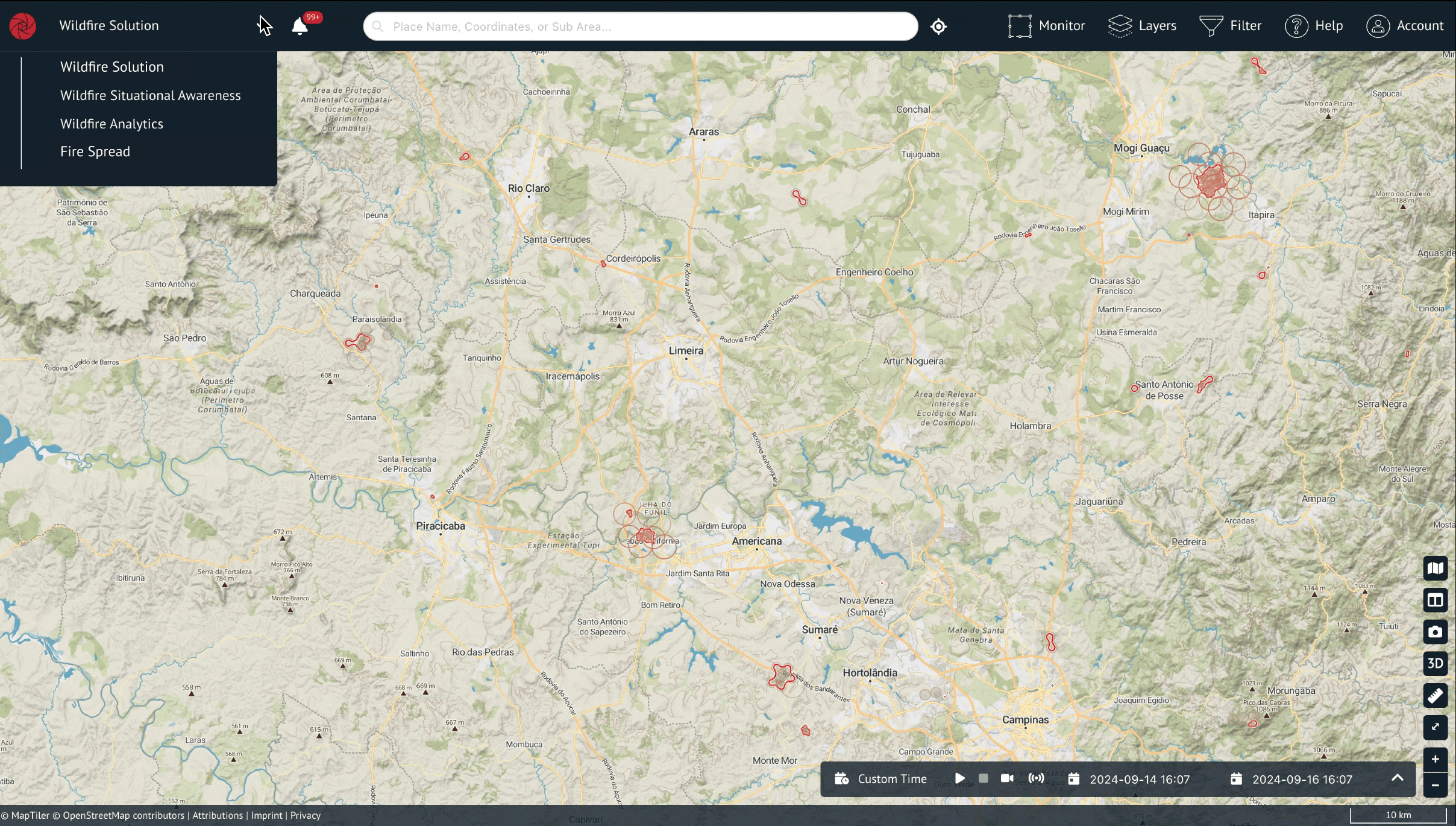crafting intuitive user experience for a GIS-based wildfire solution
UX RESEARCH & PRODUCT DESIGN (2024-ongoing)
#B2B
#SaaS
#WebApp
#SpaceTech
“My biggest takeaway was learning how to articulate design decisions with stakeholders and other nondesigners.”
PROJECT BACKGROUND
As the sole UX/UI designer at a SpaceTech scaleup, I design an intuitive, user-centered interface for a B2B SaaS platform that helps wildfire response teams make faster, data-driven decisions. My key responsibilities include:
Features Refinement: Continuously improving product functionality based on user feedback.
Measure UX: Conducting user research and defining UX metrics to measure the user experience.
1. FEATURES REFINEMENT
Overview
In my role, I tackled design tasks of varying complexity, with small tickets typically taking 1–3 days, medium-sized tickets spanning one sprint (2 weeks), and large tickets requiring 2–3 sprints to complete. Most tasks stemmed from user feedback, focusing on optimizing existing features such as:
Enhancing functionality with new features
Integrating external data sources
Optimizing interactive data tables
Improving data visualization for clearer insights
Case Study
To illustrate my design-thinking process, I’ll use a medium-sized ticket, the "Fire Spread Feature", as an example. This brand new feature was designed to help wildfire response teams simulate and visualize fire behavior in real-time, enabling faster and more informed decision-making. While the design process is never linear, my general six steps were:
1. User Research
Through quantitative research and qualitative user interviews (using MoSCoW & laddering methods), I identified the key personas and their main needs:
Enable cross-functional coordination
Ensure flexibility in adjusting input data
Based on these insights, I created a workflow diagram (right) and three detailed user flows (below) to illustrate their interactions with the fire spread feature.
5. Prototyping & User Testing
After several rounds of iteration, I created the final prototype, which gladly received positive feedback from users during testing. The testing sessions went smoothly, validating our design direction and confirming its effectiveness in meeting user needs. 🎉
User flows for three main personas
2. Technical Feasibility Study
After identifying user needs, the next step is to collaborate with data scientists to align on technical feasibilities and uncover potential constraints—such as whether mobile devices can support the required internet speed for running simulations.
This step is crucial for gaining a deep understanding of backend data processing and modeling, enabling me to bridge complex data into a seamless, user-friendly experience.
3. Ideation
Based on insights from user research and technical constraints, I designed data-driven UI elements, categorized them into four types, and explored different layouts for desktop and mobile.
These elements allow users to input data, interact with datasets, and generate insights or visualizations.
4. Feedback & Iteration Again
I presented multiple design options to the product manager and development team. This step was crucial, as their feedback helped identify missing elements, edge cases, and technical constraints.
Challenges & Lessons: With limited resources and low UX maturity, design was often overlooked. I learned to frame design in non-design terms, prioritize high-impact, low-effort improvements, and use data to gain buy-in.
Challenges & Lessons
With tight deadlines and limited access to users, I need to make quick design decisions independently. Working with cutting-edge technology meant few industry references were available. Lessons learned:
Deep User Understanding – Trying to dig deep for real user needs instead of surface-level requests.
Deep Data Comprehension – Collaborating closely with data engineers and data scientists to deeply understand backend data processing. This ensures that data visualization is not only intuitive but also aligning with user real needs.
Six-step process for new feature design
Workflow diagram for three main personas
Sketch to understand backend data processing
Draft for interactive data elements & data visualization components
Incorporating data insights into design decision (Screenshot from Posthog)
Final prototype showcases the fire spread feature
6. Next Step
Since this is a new feature, it’s crucial to monitor its usability and continue refining it in future iterations. To facilitate this, I set up tracking events in PostHog to measure user interaction and gather data on its performance.
2. MEASURE UX
Overview
The other half of my main tasks is measuring UX, which I approach through a six-step process. So far, I have completed the first three steps.
Six-step process for measuring UX
1. Map User Journey + 2. Identify Usability Issues
I made a diagram (right) to break down the process into clear, actionable steps. The goal is to create abstract user journeys that work for a wide range of customers while discovering usability issues for each persona.
Challenges & Lessons
Measuring UX can be an ambiguous task, and this was my first time tackling it. To approach it, I began by outlining a rough roadmap based on my own research. I then sought validation by attending specialized workshops, such as Vitaly Friedman's "How to Measure UX and the Impact of Design." Lesson learned:
No need to fear the unknown – just keep researching, stay open-minded, and you'll find valuable insights along the way!
My workflow to map user journey
User journey map for operator
Above are the abstract user journeys for the five main personas. Each user journey chart includes the persona's name, attributes, JTBD (Jobs to Be Done), expectations, key journey stages, specific actions at each stage, emotional change curve, thoughts and emotions, and pain points.
After mapping out these five user journeys, I also created a flow diagram (right) to visualize a typical workflow across all personas.
User journey map for other main personas
Workflow diagram for five main personas
3. Define Key UX Metrics
Based on identified usability issues, I defined key UX metrics, established tracking and measurement methods, and differentiated between short-term and long-term metrics. Additionally, I set benchmarks to evaluate progress effectively.
UX metrics chart
Thanks for reading this far!
ROLE
Research & Design
TIMELINE
7 Months+
TOOLS
Pen & Paper
Figma
Miro
Posthog
















